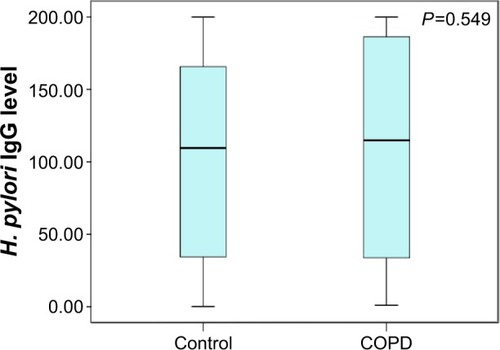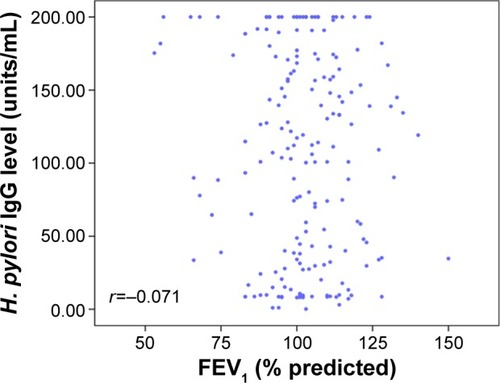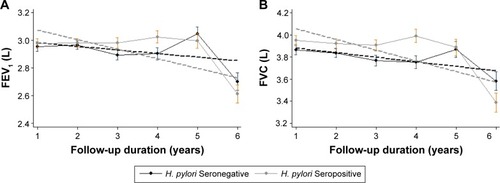Figures & data
Table 1 Baseline clinical characteristics of COPD patients and control group
Table 2 The prevalence of positive Helicobacter pylori serology by COPD stage
Figure 1 Helicobacter pylori serum IgG levels in COPD patients and control subjects.
Abbreviations: IgG, immuno globulin G; IQR, interquartile range.

Table 3 The association of seropositivity of Helicobacter pylori and CLO tests
Figure 2 Correlation between Helicobacter pylo IgG titer and FEV1.
Abbreviations: FEV1, forced expiratory volume in 1 second; IgG, immunoglobulin G.

Table 4 Univariate and multivariate analysis of Helicobacter pylori seropositivity
Table 5 Impact of Helicobacter pylori test on the lung function decline

